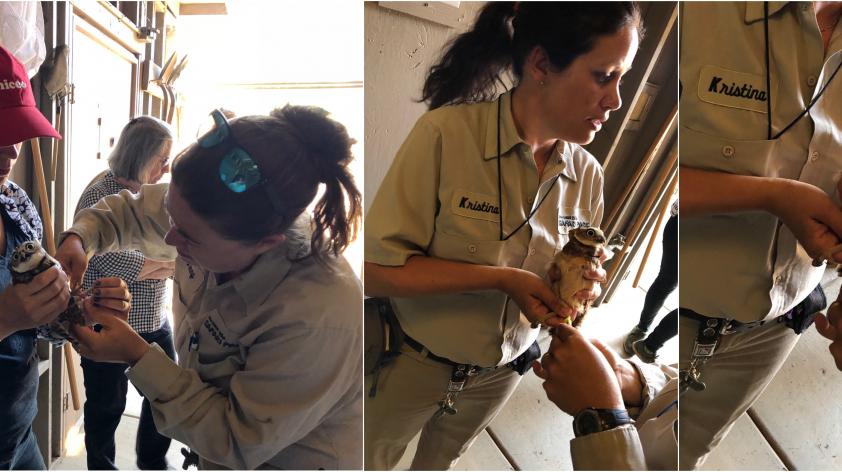
Conservation in Action: Helping the Western Burrowing Owl
We are very excited to announce the hatches of three western burrowing owls at the San Diego Zoo Safari Park last May!
We received one breeding pair in December of 2017 and a second breeding pair in March of 2018 from areas in San Diego County, where the birds were going to be impacted by development. Many preparations needed to be made before we could receive these amazing owls. Since these are sensitive owls and we are breeding for release to the wild, we decided to set up their breeding enclosure at the Bird Breeding Complex, far away from the public exhibits.
The large, noisy birds in the adjoining pens were moved farther away to give the owls a quiet and calm place to breed. Keeper activity in the area is also kept to a minimum. The pens were planted with native plants and have low, medium, and high perches to encourage the birds to fly and improve their muscle tone, which will be essential to their survival when they are released to the wild. These fledglings are scheduled to be released in January, 2019.
The Institute for Conservation Research (ICR) Burrowing Owl Team works closely with us and assisted with set up of the burrows and connecting tunnels in their temporary home. ICR gave us special nesting burrows, the same that are used in the wild, for artificial nests for burrowing owls.
They also assisted us with banding the birds and catching the birds for their West Nile Virus vaccines. Each chick gets a series of three vaccines, 30 days apart.
How do you catch a burrowing owl when it is in an underground tunnel? You call the ICR team who have a special camera; it is flexible so it can move easily through the tunnels. As the camera moves towards the owls, they move away until they end up in the nest box where a researcher is waiting to take them to the Veterinary Technician for their vaccine.
The first pair we received laid their first egg outside the burrow. This one was pulled for safe keeping and replaced with a dummy egg inside the burrow, with the hope the female would lay her next one there. Dummy eggs are replica eggs keepers can use to keep the birds focused on nesting and incubating while their real eggs are kept safe in artificial incubation or storage. The plan worked and the second egg was laid next to the dummy egg.
We were then able to put their first egg back, and remove the dummy egg. Five more eggs were laid for a total of seven. The incubating bird turns the eggs and moves them around to ensure a healthy chick is developing. It was very fun for the keeper to see the different configurations the eggs would be in, the next morning. The photos were all taken from the video monitor used to watch inside the burrow. Unfortunately, all seven eggs were infertile this year, but we are hopeful for next year.
With the second pair we received, the female laid her first egg in the burrow, but then broke it and carried it out of the burrow. She did the same with the second egg, so a dummy egg was placed in the burrow. She tried really hard to break the dummy egg but was unsuccessful and she was sitting tight on it the next day!
She laid two more eggs and incubated all of the eggs until there were three tiny chicks. The chicks grew very quickly and fledged within 23 days of hatching. Photos below show the female sitting and the three chicks at 19-23 days old.
In Southern California, burrowing owls face threats from habitat destruction and degradation caused by land development. We are thrilled to be part of this breeding program to help this population in San Diego County.
Hopefully, each year we will have many more reproductive successes which means more birds released back to the wild! Saving species right here at home is very important to San Diego Zoo Global; together, with ICR (Institute for Conservation Research) and our ongoing partnership with US Fish and Wildlife Service we can make a difference for this beloved little owl living right here in our county.
By Sheila Murphy, Senior keeper, Bird Breeding Complex













